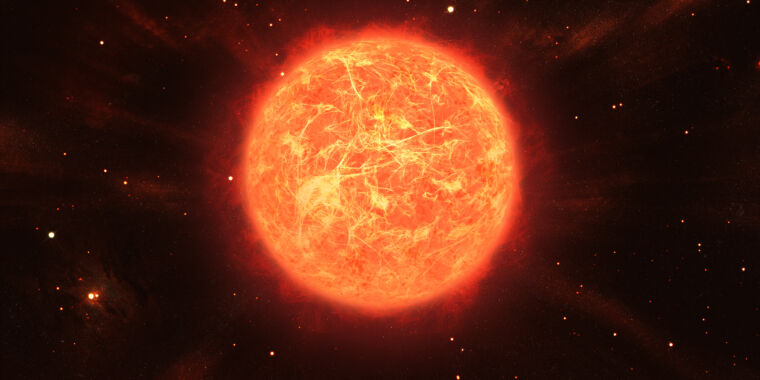I bet we, as a species, are in love with our home planet (despite our excessive carbon emissions). But the ugly truth is that the Earth is doomed. One day, the Sun will enter a phase that will make life impossible on Earth, and eventually reduce the planet to just a sad, lonely piece of iron and nickel.
The good news is that if we put our minds to it — and don't worry, we'll have hundreds of millions of years to plan — we can keep our world a hospitable home, long after our Sun has gone crazy.
A waking nightmare
The Sun slowly but inevitably becomes brighter, hotter and larger over time. Billions of years ago, when clumps of molecules began dancing together and calling themselves life, the Sun was about 20% dimmer than it is today. Even dinosaurs knew a weaker, smaller star. While the Sun is only halfway through the major hydrogen-burning phase of its life, with a variable 4 billion years before it starts dying, it is the strange combination of temperature and brightness that makes life possible on this tiny Earth world. Our planet will be eroded in just a few hundred million years. The blink of an eye, astronomically speaking.
The sun sows the seeds of its own demise through the basic physics of its existence. At this very moment, our star is chewing up nearly 600 million metric tons of hydrogen every second, smashing those atoms together in a nuclear inferno that reaches temperatures of more than 27 million degrees Fahrenheit. Of these 600 million metric tons, 4 million are converted into energy, enough to light the entire solar system.
However, this fusion reaction is not completely clean. There is a remaining byproduct, the ash from nuclear fires: helium. This helium has nowhere to go, as the deep convection cycles that constantly move material inside the Sun never reach the Sun's core where helium is formed. So the helium just sits there, inert, lifeless, and useless, clogging up the machine.
At its current age, the Sun does not have high enough temperatures and pressures in its core to fuse helium. So, helium gets in the way, increasing the total mass of the nucleus without giving it anything else to fuse with. Fortunately, the Sun is easily able to compensate for this, and this compensation comes through a part of physics known as hydrostatic equilibrium.
The sun exists in constant equilibrium, living on the edge of the nuclear knife. On the one hand are the energies released by the fusion process, which, if left uncontrolled, could threaten to blow up the Sun, or at least expand it. Countering this is the immense gravity of the star itself, pressing inward with all the force that 1,027 tons of hydrogen and helium can muster. If this force continues unchecked, the Sun's gravity will crush our star into a black hole no larger than a medium-sized city.
So what happens when an unstoppable force faces irresistible pressure? A nice balance, and a star can live for billions of years. If for some reason the temperature of nuclear hellfires randomly increases, it will heat the rest of the star and inflate its outer layers, relieving gravitational pressure and slowing nuclear reactions. If the Sun randomly contracted, more material would push itself into the core, where it would participate in the intoxicating nuclear dance, and the resulting energy release would conspire to re-inflate the star to normal proportions.
But the presence of helium ash, that nuclear waste, upsets this balance by displacing hydrogen that would otherwise fuse. The sun can only pull inward, gravity is relentless and uncaring. When this happens, it forces the nuclear reactions of the nucleus to become more ferocious, raising its temperature, which in turn forces the surface of the Sun to swell and brighten.
Slowly, slowly, slowly, as helium continues to accumulate in the core of the Sun (or any other star of similar mass), it expands and brightens in response. It is difficult to predict exactly when this brightening will spell disaster for our planet, and this depends on the complex interaction between radiation, the atmosphere and the oceans. But the general estimate is that we have about 500 million years left before life becomes impossible.

“Extreme travel lover. Bacon fanatic. Troublemaker. Introvert. Passionate music fanatic.”






More Stories
Who is the band Gojira that will perform at the Olympics opening ceremony?
SpaceX Moves Crew Dragon Spacecraft to West Coast After Multiple Space Debris Incidents
Stathis Karapanos – Hindemith Review: Complete Works for Flute